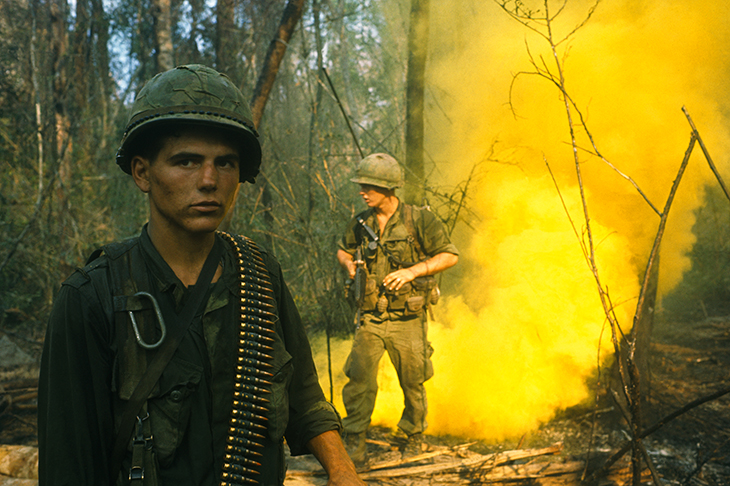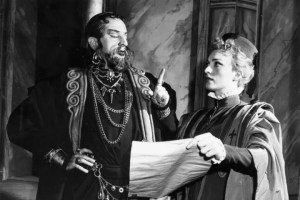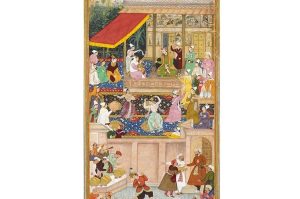The 50th anniversary of the Vietnam war has produced an outpouring of books, along with Ken Burns’s 18-hour television spectacular, which sparked in the United States yet another round of heated debate on the war. The journalist and military historian Max Hastings’s fast-paced and often compelling narrative will surely rank as one of the best products of this half-century reappraisal.
Vietnam: An Epic Tragedy is a monumental undertaking. Many books analyse major Vietnam war policy decisions. Others discuss military operations; still others recount personal experiences. Hastings does all three in a single volume, although he gives greatest attention to the on-the-ground activities of North and South Vietnamese, NLF and NVA, Americans, Australians and even New Zealanders.
Americans usually date their Vietnam war from 1961, when John F. Kennedy drastically escalated the US commitment, or from Lyndon Johnson’s 1965 decisions to bomb North Vietnam and send combat troops to the South. Hastings treats the first and second Indochina wars as a single entity. The conflict begins with Ho Chi Minh’s declaration of independence from France in September 1945 and ends with the fall of Saigon in April 1975.
Controversy raged worldwide during the war itself, continued long after it ended, and persists a half century later. Hastings tackles the key issues head on. Why did the United States spend 58,000 lives and an estimated $150 billion on an area so remote and seemingly insignificant? He stresses Cold War exigencies and above all US domestic politics. There is no Reagan-like ‘noble cause’ here, no Ken Burns’s good intentions gone awry. From Truman to Nixon, US leaders escalated the commitment rather than be ‘seen to quit, fail, or lose… to the communists’, while ignoring the needs and interests of the Vietnamese people.
Hastings is surely right in emphasising domestic politics. What he does not always provide is the unique context that helps explain each of the major decisions. There is no mention, for example, of the intense pressure on Washington from Paris and London in 1948 and 1949 to help stave off a French defeat in Vietnam, the last time Britain would urge US escalation.
Hastings is equally unsparing in assessing the reasons for US failure in Vietnam. Americans fought the way they knew how to fight in an area and type of war singularly inappropriate for it. They relied on air power (four million tons of bombs were dropped on South Vietnam, significantly more than on the North), artillery and chemicals laden with dioxin, all of which wreaked massive destruction on the country they were trying to save and alienated the people whose hearts and minds they sought to win. They thrust aside the Saigon government, for which many Americans had contempt, and its army, in which they had no confidence. They inundated South Vietnam with money, materiel and men, undermining an already fragile social and political fabric.
The book also poses a question Americans seldom ask: how did a backward, post-colonial nation like North Vietnam ultimately prevail in a war with the world’s greatest power? Hastings singles out the iron will of Hanoi’s leaders, especially Le Duan, who wrested leadership from Ho Chi Minh as early as 1960. Even after the massive end-the-war offensives of 1964, 1968 and 1972 failed miserably, with catastrophic costs in men and materiel, Le Duan’s politburo managed to negotiate the United States out of Vietnam in 1973 and mount a final offensive in 1975. Hanoi, Hastings adds, had the singular advantage of controlling information so that its numerous ghastly mistakes were not exposed to public scrutiny or debate.
Among the military leaders discussed in the book, there are no heroes. General William Westmoreland was out of his depth; his successor Creighton Abrams was a ‘competent, decent officer, well suited to conventional warfare in Europe’. The South Vietnamese are venal, corrupt and, worst of all, incompetent. Even the legendary Vo Nguyen Giap draws criticism for his imperviousness to the loss of human life.
The North Vietnamese gained sympathy among some antiwar protesters and leftists as victims. Hastings shows them as hard-bitten ideologues: nationalists, to be sure, but also firmly committed Stalinists, who brooked no dissent and imposed enormous hardships on their own people. They won, but at a staggering cost in human life.
Where the book excels is in telling the stories of countless people from numerous countries who got caught up in the 30-year struggle. We encounter those Viet Minh who hauled the heavy artillery into the mountains around Dien Bien Phu, and those frantic northerners, Catholics and otherwise, who left behind family and belongings to escape to the South after the 1954 Geneva Conference. We meet Colonel Nguyen An, a survivor of Dien Bien Phu and in 1964–1965 one of the first NVA regulars to trek down the then primitive Ho Chi Minh Trail; Lieutenant Don Snider, an American who served three tours as an adviser to South Vietnamese forces and like so many Americans never really bonded with them; Nguyen Van Uc, a South Vietnamese helicopter pilot who logged 6,000 flying hours; and even Russian and Chinese technicians who advised the North Vietnamese. These portraits and many, many others are appropriately nuanced and range over the human experience.
The courage and heroism not evident at the top are on full display in the lower ranks: the Viet Minh soldier who placed his body under a heavy gun to keep it from rolling off a hillside at Dien Bien Phu; the American civilian, Doug Ramsey, who miraculously survived seven years in a Viet Cong prison camp; the US Marine colonel John Ripley (a high school friend of this reviewer) who, with a fellow Marine, blew up the bridge at Dong Ha to slow the advance of North Vietnamese troops during the 1972 Easter Offensive.
At its best, Hastings’s book deftly integrates decision-making with its impact on policy and people. When the South Vietnamese president Nguyen Van Thieu refused to sign a 1972 peace agreement negotiated by Washington and Hanoi, Nixon vented his wrath by bombing the ‘bejeezus’ out of North Vietnam, the infamous Christmas bombing. Hastings takes the reader from the bedlam of the Nixon White House to the tension-filled briefing room at the B-52 base on Guam; the arduous eight-hour flight to the living hell that was the sky above Hanoi and Haiphong; the terror of those Vietnamese being bombed and the lusty cheers of US POWs in the Hanoi Hilton; the return flight for those aircraft that got through unscathed; the near universally hostile reaction in the United States and abroad; the hasty return to the negotiating table in Paris; and the signing of a treaty not significantly different from that agreed upon months earlier. ‘We bombed them into accepting our concessions,’ one US official cynically observed.
Although remarkably comprehensive in its coverage, Vietnam: An Epic Tragedy does not touch all bases. Little attention is paid to the civilian nation-building programmes that consumed vast sums of money and reveal much about US–South Vietnam failure. After the summer of 1967, the American home front became one of the most critical theatres of the war, a reality Hanoi recognised and at times played skillfully.
Immensely readable, sometimes quite acerbic in its conclusions, Hastings’s book admirably captures the experiences of many different people at different times in a long and complex war.
This article was originally published in The Spectator magazine.


















